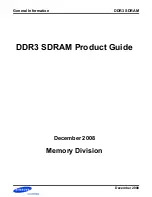
61202800L1-1B
IQ 710
Section 6, Configuration Guides
Page 193
© 2002 ADTRAN, Inc.
IQ 710 System Manual
FRAME RELAY PRIMARY RATE ISDN DIAL BACKUP WITH THE IQ 710
Introduction
The ADTRAN IQ 710 provides disaster recovery protection for Frame Relay circuits. This configuration
guide will describe how to configure Primary Rate ISDN (PRI) Dial Backup (DBU) between a host site
and 23 remote sites. The IQ 710 can simultaneously support 23 calls at 64K. The host unit used in this
example is an IQ 710 with ISDN PRI DBU and T1/DSX cards. The IQ 710 will support DBU sessions
with the various ADTRAN IQ and ATLAS units. The remote units used in this example are an ADTRAN
DSU IQ, TSU IQ, and TSU IQ+ with BRI DBU cards.
Before You Begin
For this example, each IQ 710 unit will require an ISDN PRI DBU card (P/N 1204008L2) and a T1/DSX
card (P/N 1202803L1). The remote units will require ISDN BRI DBU cards (P/N 1204004L2).
Network Description
Figure 1 on page 194 is a diagram of the Frame Relay example network used in this configuration guide.
In this example, the host site is Huntsville. Twenty-three Permanent Virtual Circuits (PVCs) originate
from Huntsville. Three of the twenty-three remote sites are shown (Atlanta, Montgomery, and Birming-
ham). The twenty-three DLCIs used by the host site to communicate with these remotes are 16-38 (with
16 connecting to remote site 1, 17 connecting to remote site 2, etc.). All remote sites use DLCI 20 for
communication with Huntsville. The remote site extensions begin with 555-2000 and increment by one
digit ending with 555-2022 at remote site 23. For example, remote site two's extension will be 555-2001,
remote site three's extension will be 555-2002, and so on. All SPIDs will use the 256-555-20XX-0101 for-
mat. All area codes for this example will be 256. Please remember DLCIs have local significance and are
assigned by the Telephone Company (TELCO) when the Frame Relay network is built; therefore the
DLCIs for your Frame Relay network will most likely be different from the ones used in this example.
The remaining parameters described in Figure 1 provide a description of the BRI lines that terminate into
the remote units. The Telephone Company will provide you with the Local Directory Numbers (LDNs)
and Service Profile Identifiers (SPIDs) for each of your BRI lines. In addition, you must know which type
of Central Office (CO) switch is providing the ISDN service. The PRI unit will require one LDN, as shown
in Figure 1.
Configuration options vary depending on the DBU card and the network interface installed. In order to
clarify the configurations, examples will be provided for the host and all three remote units.















































